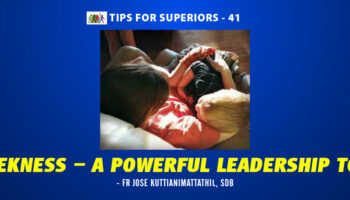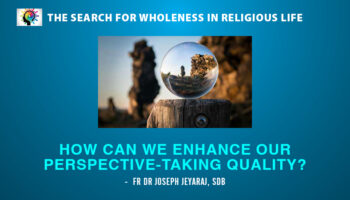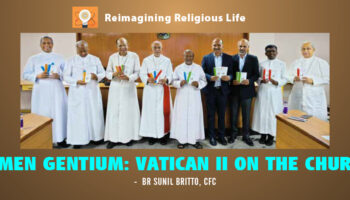Denis, a young man doing his theological studies, has asked to speak with me: “Sister, I was disappointed with what you previously wrote about attraction! It really sounded cold. Are we merely some kind of puppets played by the chemicals of our body? What about love? What about the songs, poems and paintings inspired by love and attraction? How practically can I handle my sexual feelings?”
Ok, Denis, let’s see your questions one by one.
In his famous bestseller, Holy Longing, Ronald Rolheiser says: “Spirituality concerns what we do with desire.” Scott Peck defines love as: “The will to extend one’s self for the purpose of nurturing one’s own or another’s spiritual growth.” Both writers imply that we do have the capacity to decide how to deal with our feelings, attraction included!
So, while attraction is not love it can lead to it. Various studies on the response of the brain to desire and love conclude that there are three stages of desire: lust, romantic love and attachment.
The three sides of attraction
Lust: Lust or sexual desire is what makes us search for a sexual partner. Lust refers to the physical and emotional response a person feels for another. We can experience sexual attraction even towards someone whom we hardly know, or do not love. If lust dominates, we may treat persons as objects, just to satisfy our physical urges. This can lead sexual violence and deep exploitation.
Romantic Love: Romantic love is much more personal and focussed. When reciprocated, it makes people feel ecstatic. It is the theme of most movies and novels. It is the muse of the poets, song writers and artists. It cuts deeper and makes people stay together. This is necessary for them in order to have children and bring them up. It brings along a tremendous energy and focus, a reaction similar to addictive drugs. A person “in love” can think of the other person for hours on end. There is deep longing to be together. Being with the loved one feels like a bit of heaven—the best experience of life.
Attachment: Attachment is the ability that human beings have developed to stay together beyond the time necessary for childrearing. One result of attachment is mutual fidelity, as in marriage. However, only relationships based on genuine love can stand the test of time. Those based on lust can’t. My maternal grandparents were evidently in love as long as they lived. Both died in their 90s. After Grandpa’s death, my aunts found Grandma turning the house upside-down. When they asked grandma what she was looking for, she answered: “maybe your father left me a last letter…” They had been writing loving notes to each other till then.
Dealing with desire and romantic love
Anything natural is God-given, and meant to serve a good purpose. This is true of hunger and thirst. It is true of our sexual longings. But, unlike animals, we need to learn to integrate our longings in the context of our life. Just as we do not grab someone else’s food when we are hungry, we do not just follow where instinct leads us.
We neither deny our feelings, nor consider them bad or abnormal. No, they are a part of who we are as human beings.
But they are not everything. Nor are they the most important element in human life. Even in marriage, what makes a couple happy is not the intensity of sexual feelings, but the union of hearts—the experience of an inner closeness, which gives a person a warm sense of security. Even when physically apart, a couple can feel “one” if there are sure of each other’s love and care. Thus we see touching proofs of mutual love when a spouse is sick or far away.
No one becomes mature all on a sudden. We are in the process of maturing. A healthy integration of sexual feelings with the rest of our personality and life takes time and wise choices. How do we achieve it? We shall see in the next article.

To subscribe to the magazine Contact Us





